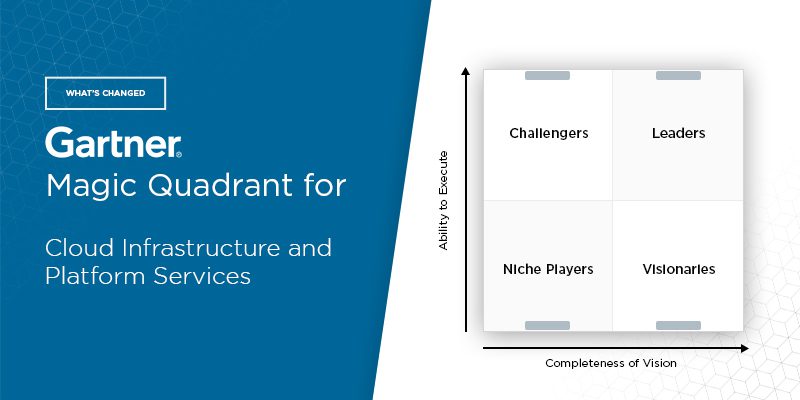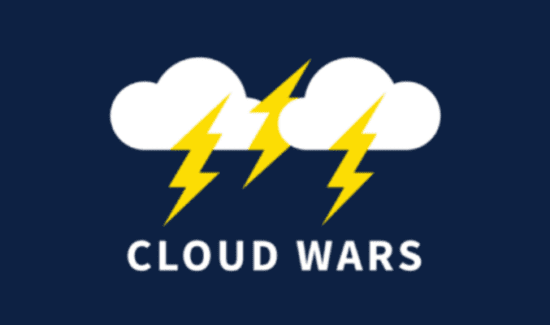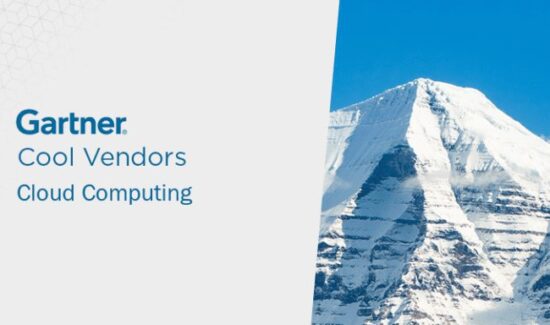What’s Changed: 2021 Gartner Magic Quadrant for Cloud Infrastructure and Platform Services

The editors at Solutions Review highlight what’s changed since the last iteration of the Gartner Magic Quadrant for Cloud Infrastructure and Platform Services and provide an analysis of the new report.
Analyst house Gartner, Inc. recently released its 2021 Magic Quadrant for Cloud Infrastructure and Platform Services. This report looks at seven leading cloud infrastructure and platform services (CIPS) providers: Alibaba Cloud, Amazon Web Services, Google, IBM, Microsoft, Oracle, and Tencent Cloud.
Gartner defines the CIPS market as “standardized, highly automated offerings, in which infrastructure resources (e.g., compute, networking and storage) are complemented by integrated platform services. These include managed application, database, and functions as-a-service offerings. The resources are scalable and elastic in near-real-time and are metered by use. Self-service interfaces, including a web-based user interface (UI) and an API, are exposed directly to the customer. The resources may be single-tenant or multitenant, and can be hosted by a service provider or on-premises in the customer’s data center.”
At Solutions Review, we read the report, available here, and pulled out the key takeaways.
Amazon Web Services (AWS) continues its dominant reign over the CIPS market with Gartner positioning it as the highest vendor for both Completeness of Vision and Ability to Execute once again. The researchers are Gartner observed how AWS serves as an innovation leader for the CIPS market, stating that they “[guide] the roadmaps of other CIPS providers.” Currently, AWS is working to increase its position in the cloud services supply chain, including AWS-designed CPUs which offer better price and performance, giving them an engineering advantage over the other CIPS vendors in the report.
Microsoft’s broad set of capabilities and strong standing in multiple use cases gives its cloud infrastructure platform Azure a great standing in the Leaders quadrant. Lately, Microsoft has been focusing on operational databases and big data solutions which have been notably successful in terms of customer adoption and user response. The vendor is also making architectural improvements to the Azure platform to help improve client experience as well as increasing the number of nterprise-focused services.
Google maintained a steady position in the Leaders quadrant, continuing to operate behind AWS and Azure but increasing its mind share among enterprise customers while still delivering on innovation. Over the past year, Google has increased its position in the edge computing market with a number of new solutions and services designed specifically for the edge. This is helping Google to close the gap between itself and Amazon and Microsoft — consistently its two main competitors in the cloud infrastructure space.
The sole Visionary of the report, Alibaba primarily operates in the Asia-Pacific market but also runs international operations (which Gartner’s evaluation is based on). In addition to increasing its Asian offerings, Alibaba is also putting attention in its database Platform as a Service (PaaS) services. Gartner named Alibaba a Niche Player in previous reports thanks to its dedication to China and other Asian countries for the majority of its business; over the past few years, the vendor has steadily improved its offering outside its native territory, helping to boost its position in this report.
Despite polarizing sentiment from its clients, Niche Player Oracle continues to rapidly expand with an emphasis on expanding international operations while moving outside traditional Oracle-focused applications. The company has positioned Oracle Cloud Infrastructure as the underlying infrastructure for all of Oracle’s PaaS and SaaS offerings, showing its commitment to delivering a full-fledged cloud experience.
Another Niche Player, IBM continues to increase its primary strategy of serving regulated industries and industries. Currently, IBM is in the middle of a corporate restructuring that will spin its managed IT service offerings into a separate company, leaving IBM to run bigger initiatives like IBM Cloud. In addition to increasing its core CIPS offerings, IBM has ramped up its focus on hybrid and edge computing solutions to become more competitive in those areas.
Tencent rounds out the report with Tencent Cloud, a solution primarily designed to serve Chinese and Asian companies (which comprises the majority of its userbase). The vendor’s current focus for its cloud platforms is increasing the amount of investment in network capabilities to support the low latencies required for gaming workloads. Its investments have ranged from IaaS to artificial intelligence (AI) to distributed cloud.
Read the Gartner Magic Quadrant for Cloud Infrastructure and Platform Services.
Looking for a managed service provider for your cloud solutions? Our MSP Buyer’s Guide contains profiles on the top cloud managed service providers for AWS, Azure, and Google Cloud, as well as questions you should ask vendors and yourself before buying. We also offer an MSP Vendor Map that outlines those vendors in a Venn diagram to make it easy for you to select potential providers.
Check us out on Twitter for the latest in Enterprise Cloud news and developments!























